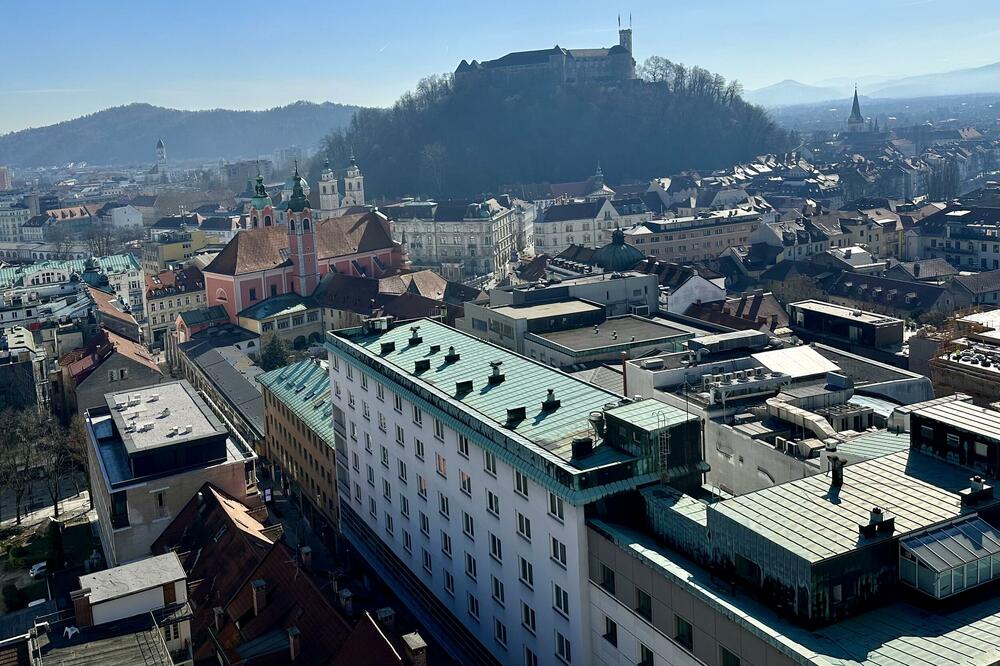The day begins on the roof of the most famous Ljubljana solitaire called Nebotičnik. Skyscraper. It was the first building in Ljubljana that surpassed the cathedral bell tower in height. The thirteen-story building looks like our contemporary, although it will celebrate its hundredth birthday in a few years. It was created during the time of the Yugoslav kingdom. Built according to the designs of Vladimir Šubić, it was completed in 1933. At that time, it was the tallest building in the country, the ninth in Europe.
It's a sunny day, and the terrace of the cafe at the top of the building, 70 meters above Štefanova Street - formerly Kidričeva Street - is packed. High school students, tourists, local businessmen, everyone would like to sunbathe today. We are lucky because some visitors are just leaving. For the next hour, at the table next to the glass fence, as if in a theater box, we enjoy the view of the city of Ljubljana, the recognizable bulge of the hill above the roofs of the town. At the foot of the banks of the Ljubljanica river, the old town core sleeps. If we turn around, we will see on all sides the settlement that the Romans called Emona, and the Germans called Laibach, we will recognize striking points like on a map. And the snowy Alpine peaks behind everything crown a beautiful scene.

From here, from the drone's perspective, Ljubljana can be read like a manuscript. Church bells are metaphysical exclamation points. The view distinguishes eras - the further north, the more modern. The bridges with their historical names are special footnotes in the story: Šempetrski, Žitni, Zmajski, Mesarski most. Tromostovje. Fish bridge Šuštarski and Šentjakobski most.
Squares and parks. From Plečnik's arcades, through Prešeren Square and Congress Square to Tivoli. Many registered themselves in this construction map. But Plečnik's handwriting is the most visible. This architect influenced the appearance of the city in both Yugoslavia to such an extent that without his works, Ljubljana would look unfinished, almost without an identity.
We descend in the elevator that hums peacefully. Let's take another look at the building from below.

On the side facade is a female figure sculpted by Lojze Dolinar. Belgraders who pass Nemanjina on the railway building will also see the figures of the Slovenian sculptor. A tour of Ljubljana's sights can be done on foot. All are located within a radius of several kilometers.
Burned twice
The Cathedral of St. Nicholas is actually the third church built on that site, in the center of Ljubljana. The first was mentioned in the 13th century, it was built in the Romanesque style. It was destined to last a short life - it burned in a fire. They built a church in the Gothic style on that spot. It lasted more than two centuries before it too was engulfed in flames - there are indications that the fire was caused by the Ottoman invaders. Today's building was built over five years according to the plans drawn up by Andrea Poco. It was completed in 1707. Its baroque splendor speaks of the aesthetic concepts of that time.
The church is better seen from a distance, since the area around it is networked with alleys and other buildings. When we approached it from Cyril and Methodius Square, we first noticed the unusual door. The massive bronze certainly did not overtake the baroque 18th century. A series of relief figures on the door represent the Bishops of Ljubljana. The door was installed in 1996 in honor of the visit of Pope John Paul II to Ljubljana.
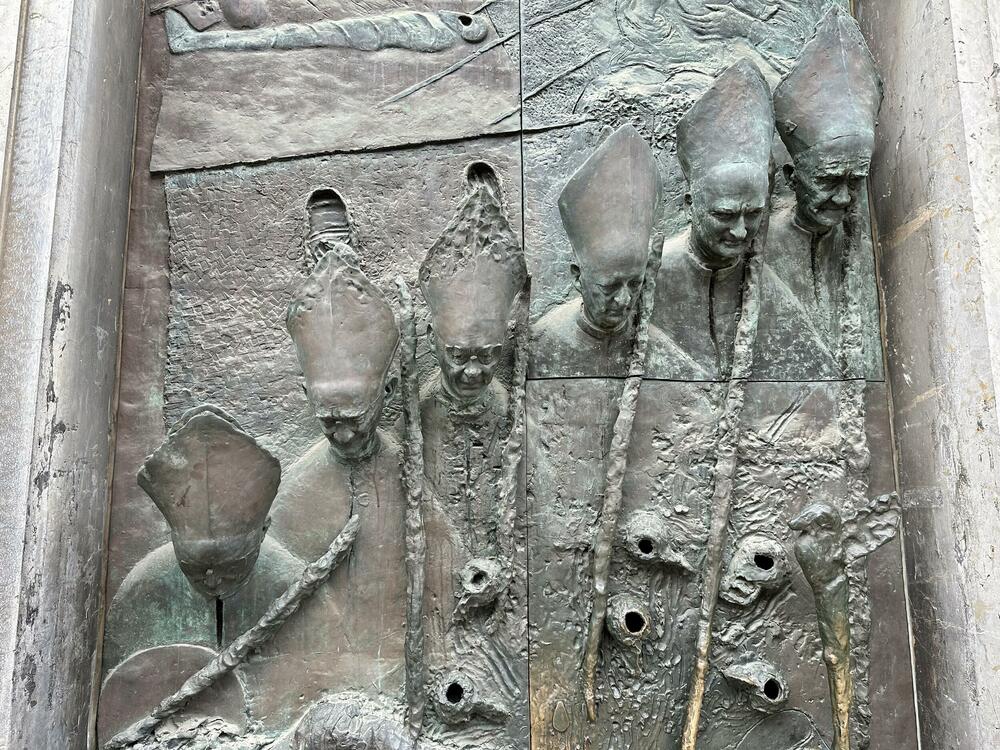
The frescoes on the ceiling were designed by Giulio Quaglio. And the altar of the Venetian Francesco Roba, son-in-law from Ljubljana, who inherited the stone-cutting shop from his father-in-law. His work is also the famous Rob's fountain.
Entrance to the church is paid. It also has advantages - there is no one inside. Monday. We sit on the bench and watch what the human hand is able to do, carried away by metaphysical inspiration. Baroque is flaunting shapes, colors, lines. The Renaissance used a self-sufficient circle that rests harmoniously within itself. Baroque flattened the circle into an ellipse, movement and effect are important to him. And indeed, the delight of observation quickly turns into fatigue caused by abundance.

Behind us is the organ from 1911. The youngest part of the church, if we don't count the door.
An elderly Italian couple enters the church. They are sitting a few benches in front of us. He whispers and waves his hands, but the acoustics of the church thirstily absorb his melodious whisper and turn it into a hissing echo. She is silent and watches. Time to go.
Across two squares
Anyone who finds themselves in Ljubljana sooner or later has to come across Tromostovje. From 1842 there was a stone bridge that replaced the dilapidated wooden bridge. Plečnik added two bridges in 1929 and created a unique composition of bridges by which Ljubljana is recognized. As soon as we cross one of them, accompanied by the sounds of the alpine accordion of a street musician, we come across the famous Prešeren Square. France Prešern is a bit pensive on his pedestal. The monument to the Slovenian poet in the symbolic and real heart of Ljubljana shows how important his lyrics are to Slovenians.

I remember the poet's unrequited love for Juliet that made the Sonnet Wreath possible, and I feel like patting him comfortingly on the shoulder - but he has long been beyond the reach of human comfort.
Behind the Prešeren monument is probably the most beautiful church facade in Ljubljana - the Franciscan Church of the Annunciation. Of course, it is advisable to enter it and bathe your soul in baroque splendor. But after staying in the Cathedral, the capacity to admire Baroque ornamentation has somewhat decreased.
We walk further down Wolfovo Street and exit onto Kongresni trg. That area is at the same time a park and a square and a representative space. The philharmonic and university buildings, the Church of the Holy Trinity and a unique view of the city of Ljubljana - this square was also remodeled by Plečnik.
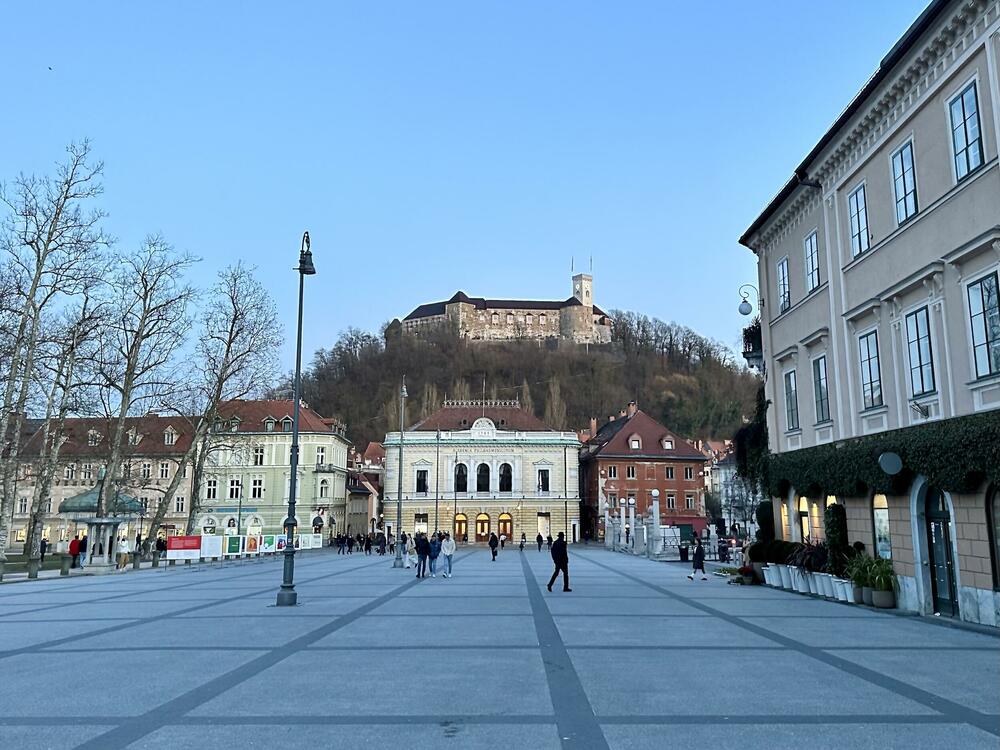
In October 1918, the crowd gathered here demanded unification with Serbs and Croats. Josip Broz spoke from the balcony of the university building in 1946. Mass demonstrations began on Congress Square in June 1988 as a sign of protest against the arrest of four journalists - it was the first visible step towards independence.
Barista Sebastian
We continued towards the National and University Library - it is also Plečnik's work. It was completed in 1941 on the eve of World War II. Its unusual monumentality - it resembles a brick fortress with an eccentric facade - catches the eyes of passers-by. A little further on is the City Museum, and in it the STOW specialty coffee shop.
It has already become a habit for us to look for coffee shops with the specialty mark abroad. They guarantee a highly cultivated attitude towards preparing coffee.

This place is on the ground floor of the museum itself and successfully combines historical space with modern architecture. The manager and bartender is Sebastian Pirc. He talks to us about the drink he brings before us like a sommelier talks about wines - expertly and with passion. He tells us that a barista today is not just a man who will turn on the machine to prepare your coffee. He is also an expert on the entire production chain, the technology behind expensive machines, the methods of grinding and roasting grains. A true barista knows everything about growing coffee. He shows us the pictures on the wall - photographic portraits of Latin American coffee growers who do not work for corporations but for selected connoisseurs.
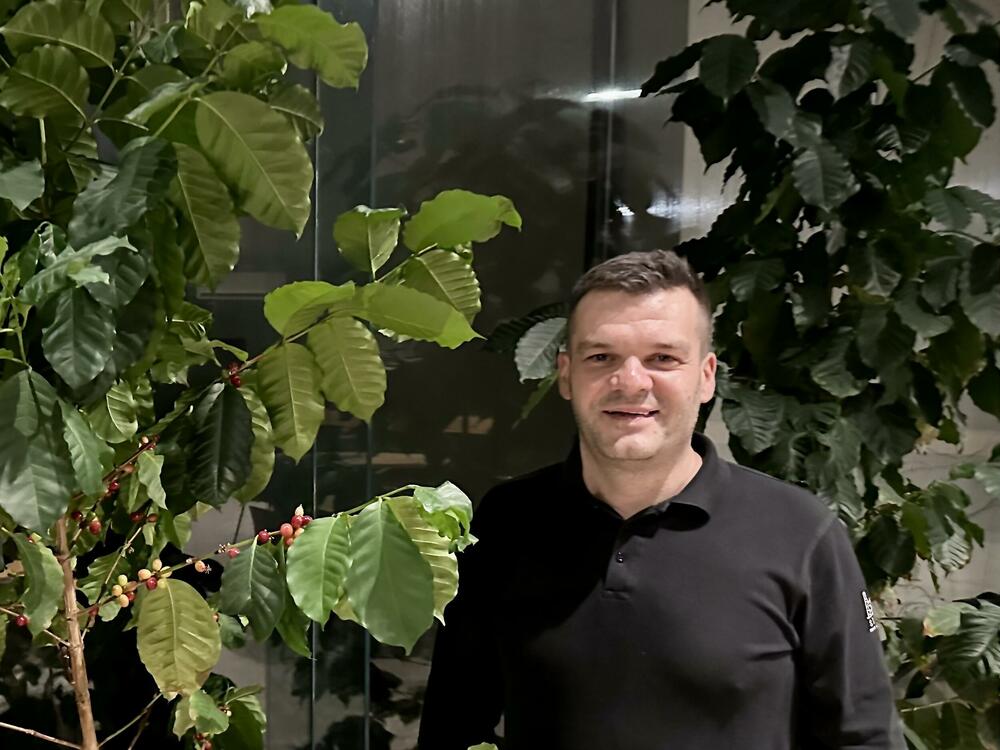
Sebastian explains that the coffee we drink leaves traces of wild strawberries, passion fruit and honey on the palate. She comes from Colombia and her name is YENNI ESPERANZA EL PARAISO. We don't know what we like better, Sebastian's storytelling or the truly racial coffee. Sebastijan says with a smile that he is also an instructor for baristas and that he has trained several top colleagues from Belgrade. The plants that decorate the cafe room are really - original coffee trees.
Tivoli and the Serbian church
The next day we went to Tivoli city park. And that name stuck in my memory even in my childhood - reporters called from basketball games from that sports hall. Later, I became interested in the concerts that were held there.
The park is a mirror of Ljubljana - well-kept, arranged, beautiful in a calm way. The Tivoli Palace now houses the International Graphic Arts Center and a café with a terrace. For several years, the palace belonged to the famous Austrian general Radecki.
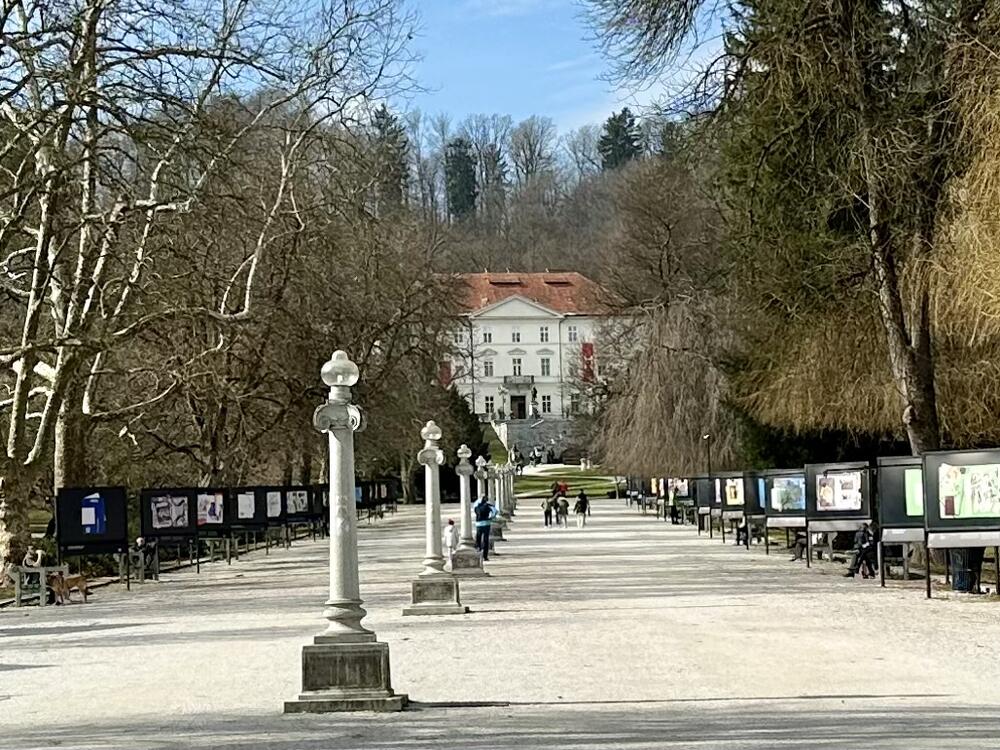
The four bronze dogs under the staircase at the entrance to the building are attributed to a Viennese sculptor named Anton Dominik von Fernkorn. Legend has it that he allegedly forgot to sculpt the tongues in his jaws and killed himself because of it. Von Fernkorn, better known to us as the author of the Zagreb monument to ban Jelačić, did not commit suicide, but died in a Viennese clinic for nervous diseases. But legends don't care about facts.
We took a well-deserved break at Pivovarna Union, which was founded way back in 1864. In this millennium, it belongs to the Heineken concern. Local breweries that the concern buys sometimes produce better beer than the parent company. An example of this is Zaječarsko and unfiltered Union beer, which are served in an excellent beer hall.
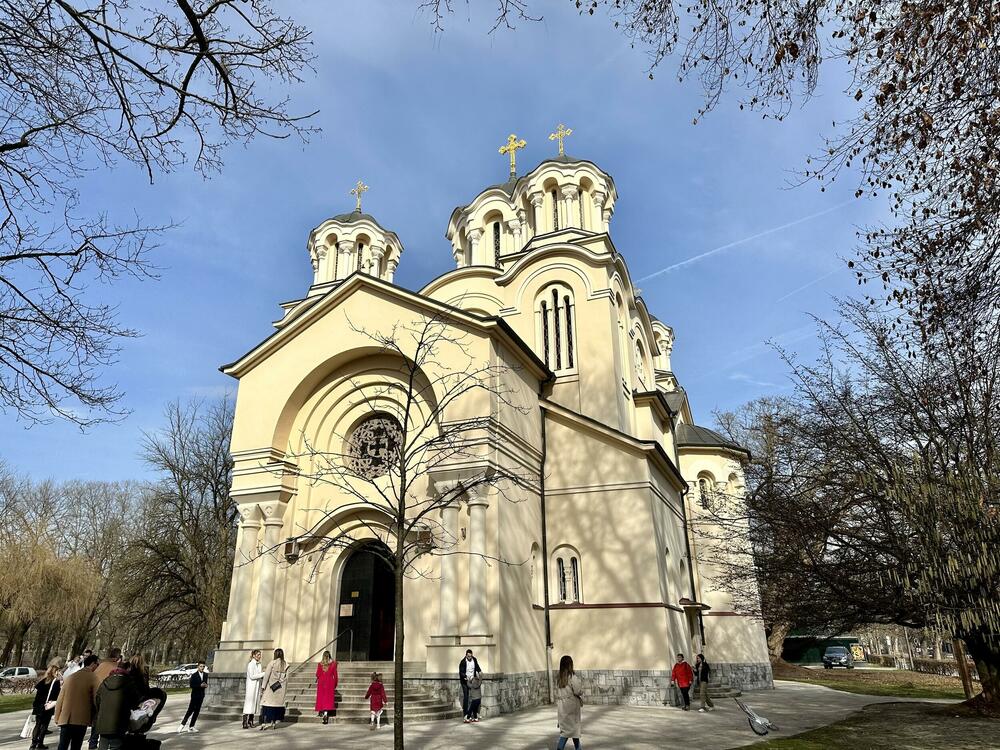
On the way back, we stop by the Orthodox Church of Saints Cyril and Methodius, which is located near the Museum of Modern Art and the National Gallery. The church was built in 1936 according to the designs of architect Momir Korunović. The representative place then symbolized good Slovenian-Serbian relations.
Cankar's home
In the five days we stayed in Ljubljana, we came across Cankar's home one afternoon. For me, this name evoked unpleasant associations. I was in Belgrade in 1988 when the crowd rushed to the assembly. The trigger was support for the strike of Albanian miners from Kosovo, which came at the end of February of that year from the Slovenian political and cultural elite gathered in Cankarje's home. The genie that will bring a lot of suffering that night in Belgrade was released from the bottle, and the corkscrew was in Ljubljana. Now we drink coffee in Cankarjevo dom, in the Idealist cafe. The works of Yugoslav artists are arranged along the long hall of the concrete building. I recognize the Barber's horse. I was particularly attracted to the work of Mladen Srbinović, which was installed in 1980.
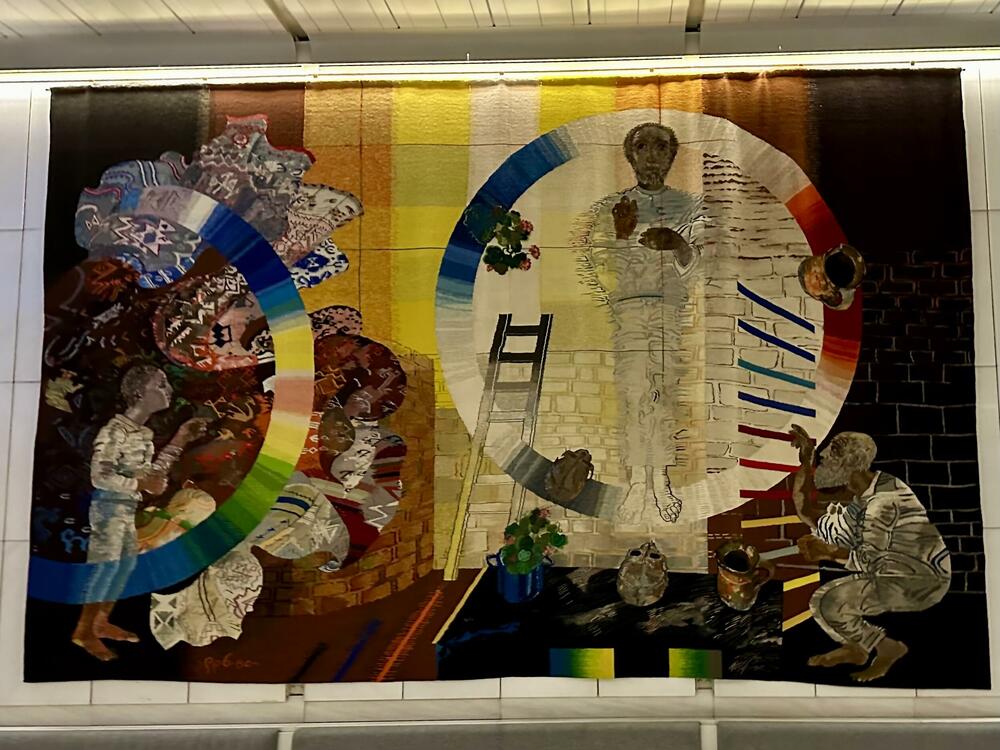
On the way back to the apartment, we passed by the factory that produced bicycles - Rog. It became a victim of the transition back in 1991. But in the following decades, at one point, the city decided to buy the building and the land and turn it into a creative center. We entered the building these days, it's really fascinating what can be done when thinking about the common good.
In front of the building is a monument to the "Deleted". People who, like fish on dry land, found themselves in Slovenia at the time of its separation from Yugoslavia. The government did not give them papers. Their rights were taken away on February 26, 1992. The exact number is written on the monument: 25 671. The most painful injustice committed by the young Slovenian democracy.
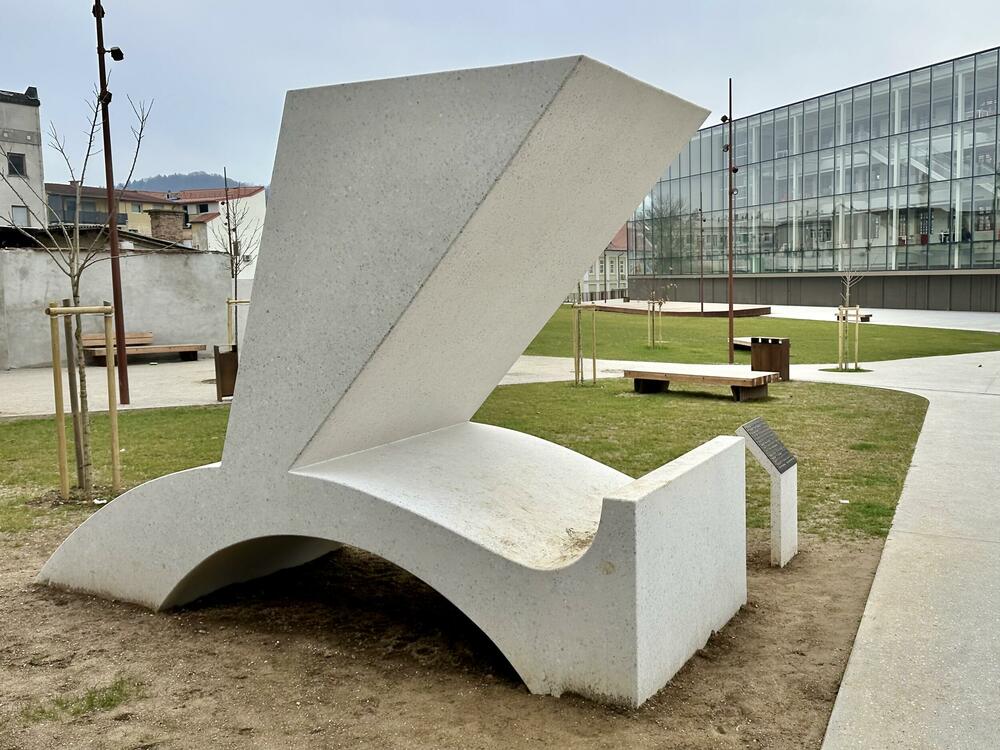
Those people became illegal intruders overnight, without health and social protection, without the right to work. The monument also reminds us that not all Slovenians justified this practice. The former factory housed an alternative center that organized actions of solidarity and support for the erased people.
Cap of Jerusalem
If I had to choose the most beautiful morning in Ljubljana, it would be the morning of the last day. By then we had seen a lot, we were in no rush. The hunger for new sensations is quenched. The realization remains that we haven't seen everything by a long shot. And that we will come again, as soon as we have the opportunity. We sat down in a bar located in Plečnik's arcades opposite the market. We ordered Pomeranian meze and white wine. It had an unusual name - Jerusalem Ormož. Red muscat.

Back at the end of the last millennium, at the Book Fair in Frankfurt, I tried their white wines at Slovenian publishers. I was surprised by the quality. But even so prepared, I was now amazed by the fruity bouquet and bittersweet flavors. I remembered the verse of the old master Edvard Kotsbek: "...in the vase is the smell of wine". Actually, nothing unusual - Slovenian wine smells like flowers.
We were also interested in the story about the Pomeranian village of Jerusalem. It was founded in the 13th century by German crusaders on their way back from the Holy Land. I guess they brought vines with them.
That morning we enjoyed the Jerusalem grape, saying goodbye to the city. A lot more could be said about Ljubljana, but let the film stop at that shot, when the February sun is frolicking in a glass of red muscat like a goldfish.
Bonus video:



